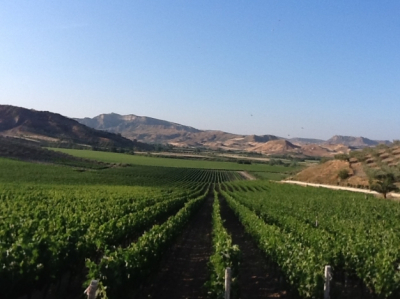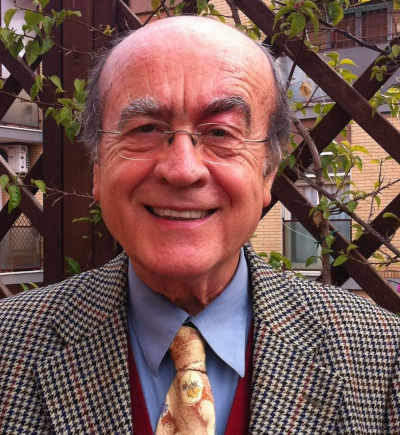The various meaning of the word territory
The word territory derives from terrae torus, literally ‘bed made of land’, and it originally indicated the land that ancient peoples took possession and delimited. The Romans were the first to apply a legal framework to a community of people taking possession of areas of land with regere fines or “drawing the borders”. Throughout the ages technical and experimental knowlwdge was passed down the generations and slowly agriculture was born

That knowledge gave the same importance to and combined together the experiences of field crop work, animal breeding, the relationship between man and primary resources and any related duty, with the use of symbols, measurements, calculations and writings. It is a practical and experimental knowledge that, thanks to the values of equality and mutual help belonging to the rural world, gave life to the first settled human communities. Territory, agriculture and community are undeniably intermingled with one another. This connection can be found in the various meanings of the word land: area to be safeguarded from hydraulic instability and swamp and to be restored, in order to make it suitable for farming, building and inhabiting; agricultural resource surrounding a human settlement; village or district where farmers – especially in the Central Southern Italy ‐ exchange their products, the place they left in the morning and to which they came back in the evening; a place which resources and metaphysical potential must be promoted, employed and preserved by being supportive and safeguarding the goods of everyone, in order to meet people’s needs.
For a long time, the word territory has been used quite exclusively to indicate a delimited area coming under the jurisdiction of a certain form of political authority. The word defined not only territorial lands, but also territorial waters. According to the Dictionnaire de la langue française (1863‐72) by Émile Littré, the territory ‘is the extension of land at the disposal of an empire, a province, a city, a government’. In other words, an area of jurisdiction, defined by surface, shape and borders only.
Territory as landscape
Research in the field of Ethology has recently improved the concept of territory with a further meaning. The behaviour of some animal species has showed more basic elements of localization, division and defense of the land. Afterwards, the focus moved from the animal society to human phenomena, from biology and psychophysiology to the study of space perception, representations and images. The definition of territory is now more complete. Edward William Soja (1971) defined the word territory as ‘a behavioural phenomenon associated with the organization of space into spheres of influence or clearly demarcated territories which are made distinctive, or considered at least partially exclusive by people occupying or defining them’. Some functions are connected to the territory, including the identity of an individual or a group, the sense of belonging and the relationships within a community. Therefore, their meaning, which ethological studies make more understandable, has a social origin. Territory is thus not a mere framework, a physical covering separated from its social components. Lucien Febvre (1922) had already expressed this concept when he wrote that the territory is not ‘that wide fixed space on which the States have marked out their limits’.
However, with Emilio Sereni (1961), the concept of territory acquired the meaning of space in which ‘men, during and for the sake of their agricultural production activities, consciously and systematically, give to the natural landscape’ a particular ‘shape’ called ‘agricultural landscape’. ‘This new technical relationship (between man and nature) – stated the scientist – develops new kinds of relationships between men that gather in associations, new forms of property, new types of society, politics and religion that are all conveyed by and expressed in the variety of agricultural landscapes’.
Territory as a rural-urban ‘continuum’
Therefore, the interaction between city and countryside develops the territory. ‘It is not the city that arises from the countryside: it is the countryside that develops from the city, which is barely sufficient to supply it’, wrote Maurice Aymard. He added: ‘A new model of social organization flourishes in the city and spreads on the territory. All voluntary or involuntary emigrants try to recreate the same model wherever they have settled’. However, we must distinguish the concept of countryside or rural area (from Latin rus, farmland) from agriculture (from Latin agri‐cultura, land cultivation). The interchange of the terms in the past was due to the lack of employment other than farming in the rural areas. Today, agriculture is only one of the various activities performed in the countryside, even though it is still the driving force of agricultural economy. New forms of rural identity are developing in those rural areas that are getting industrialized, as well as in the cities that expand into the countryside.
During the 1970s, the rural exodus to the cities, which had started in the 1950s, was replaced by a new urban exodus. The second and third generations of those who had left the countryside for better socioeconomic conditions found out that, by replicating some features of traditional society outside its context of poverty, things could improve. In fact, the consequent new lifestyles that developed comprise the fundamental aspects of the urban condition, including the proximity to the sources of knowledge and culture and new kinds of homes that are respectful of people’s privacy. At the same time, they don’t give up the advantages of the country, like the social network of relations or the pleasure of farming a vegetable garden and of cooking a typical recipe. As a result, new oxymora like peri‐urban agriculture, urbanized countryside, rural development, have entered the common language. In industrialized countries, the vision of the territory as a rural‐urban continuum makes the usual distinction between city and countryside disappear. Consequently, rural and local developments seem to merge.
Territory as part of the environment
Following the processes of modernization, especially in the richest countries, two impressing phenomena (or at least this is how they are perceived), occur. The first one is pollution, that is to say the alteration of a balance as the result of the dynamics consumption of resources → waste production that nature cannot absorb (from Latin digerere, distribute, bring here and there), rather than meaning decay or infection. The second concerns the climate changes connected to the increase of temperatures, new rain and snow regimes, ice melting, and the rise of the global mean sea level. Beyond the uncertainty with regard to the effect of human activities on those changes, in addition to the difficulty to determine the human impact on global climate, the public policies have been considering the alarmist theories legitimate. After all, ‘there is no doubt that a pessimistic attitude and the forecast of a ‘pagan’ Apocalypse make people popular’. Consequently, the word territory acquires more meanings, until it corresponds to the part of biosphere that overlooks it. In other words, the territory becomes an essential part of the environment, a set of conditions and factors connected to one another that surrounds life, a definition that corresponds to the concept of biosphere.
Territory as a kaleidoscopic identity
Finally, it is globalization that further enriches the meaning of the word territory, because the process itself is ‘a‐territorial’, that is its worse feature, with its consequent vertical management. Everything seems to weaken the sense of space: quick transports, the shift from a written to an audio‐visual logic, digital technologies, the lack of time which is necessary to understand the changes, the illusory but deceptive ubiquity, the non‐territorial multinational companies, resulting in a negligent attitude towards the community of people. The Genius Loci, the guardian of habits and traditions, the native god who safeguards the boundaries and the common territory of the community, has been forgotten. The multiplier processes characterizing the modern era, resulting from the interaction between globalization and technological innovations, threaten the interpersonal relationships and the community spirit, and are damaging the material and intangible assets of the community. This decline seems to be the main cause of those global problems that mankind currently suffers from. First of all, the increasing unbalance between resources and population worldwide. Together with the economic crisis, the global situation reduces the Earth ability to meet the growing food demand.
However, there is an increasing awareness that sustainable innovation is possible only if based on agriculture, from the point of view of both production and culture, by recovering its primitive role as the root of every community. Identifying and give a new value to our own roots and recovering the memory to the very beginning of our history seem to be a possible path to ensure our survival, fertility and the opportunity of renewing our creativity. Therefore, new processes to develop the territory, from a local to a global dimension and from a past to a future perspective, have begun. As a result, multifaceted identities are in constant evolution together with their food symbols. Equal and kaleidoscopic identities, made of memory and creativity, do not reject the outsider. Instead, they see the other as a resource rather than a threat, as a mirror rather than a black hole, which is fundamental and positive. Furthermore, they can recover the sense of brotherhood of rural societies, the interpersonal dialogue that foreruns the monologue, the value of hospitality that precedes any border.
Considering the different meanings of the word, territory is therefore the ‘place’ (the new combination of space, time and physical dimension) where agriculture interacts with the environment, the other economic activities, the urban processes and the socio‐cultural changes.
To comment you have to register
If you're already registered you can click here to access your account
or click here to create a new account


Comment this news